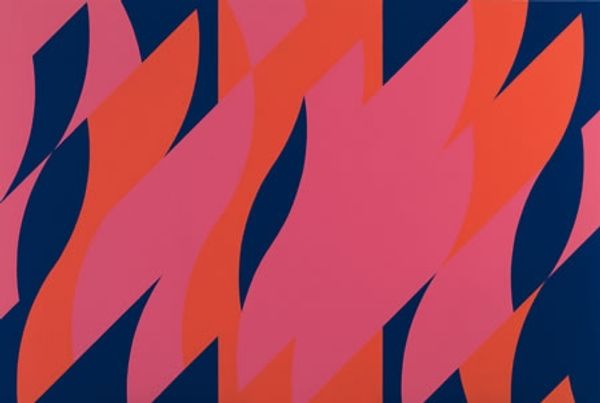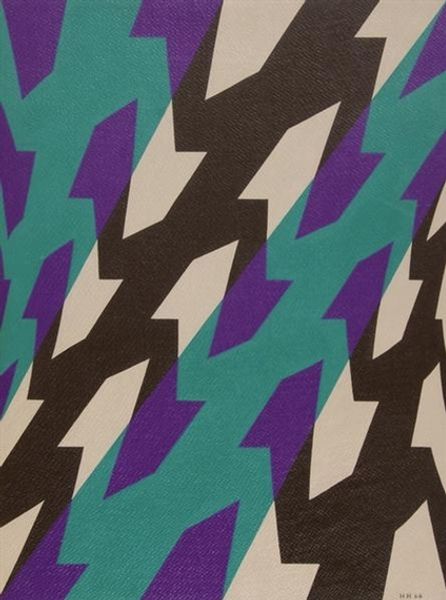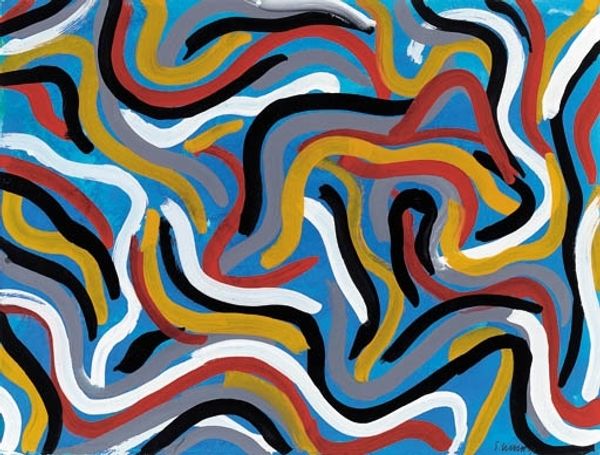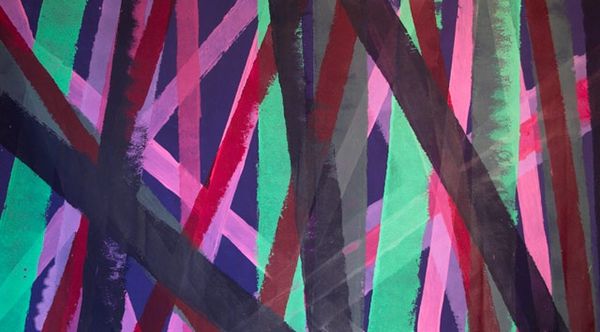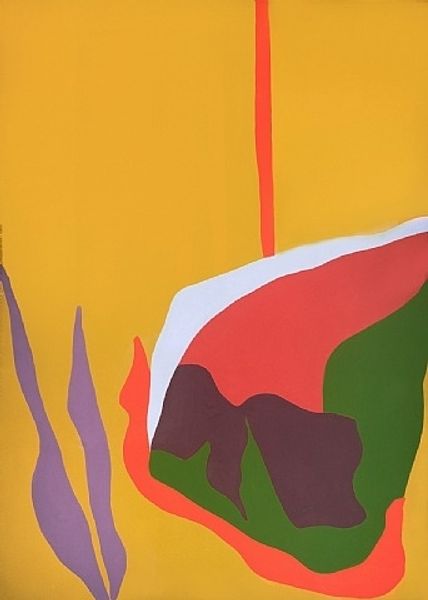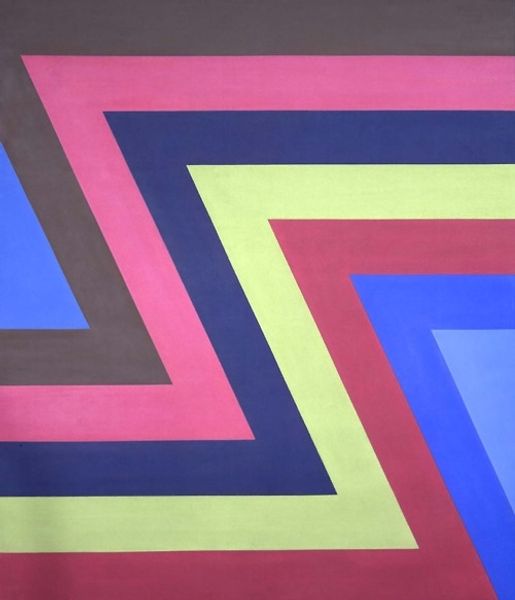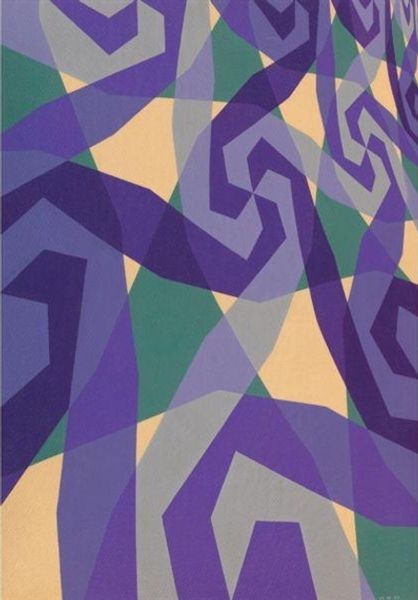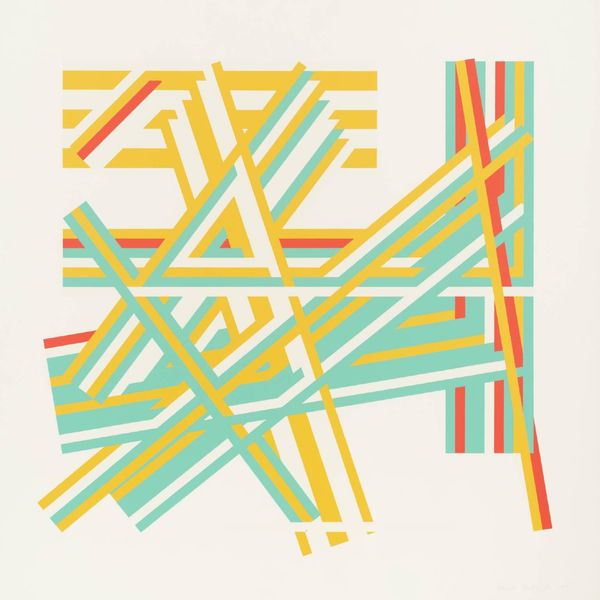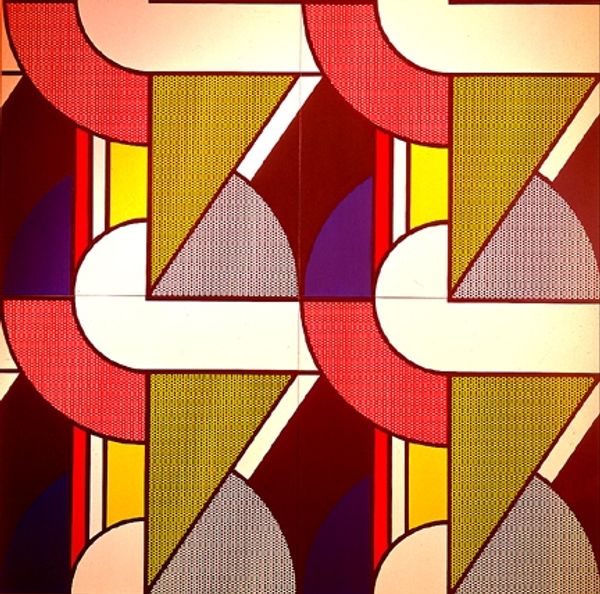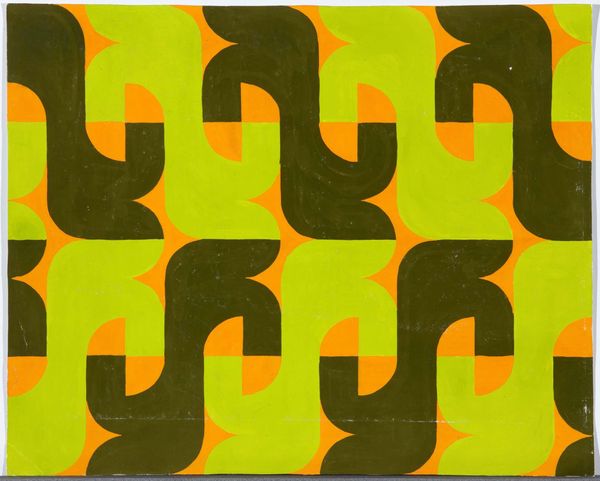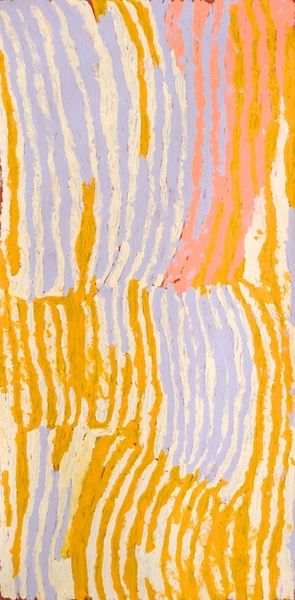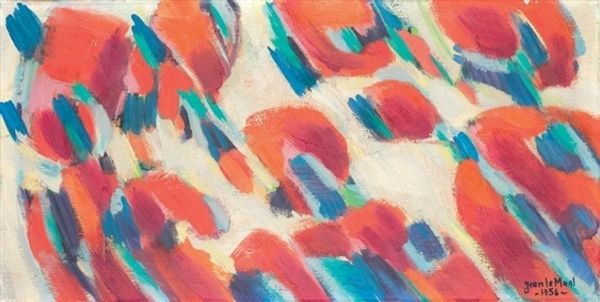
acrylic-paint
#
op-art
#
acrylic-paint
#
geometric
#
abstraction
#
line
#
modernism
#
orange
Copyright: Bridget Riley,Fair Use
Editor: This is Bridget Riley’s "Carnival," from the year 2000, done in acrylic paint. The colors and the swirling shapes make it feel almost like…movement, like a funhouse mirror. I’m curious to know more, what’s your take on it? Curator: Consider the "means of production." Riley is working with acrylic paint here, a mass-produced material. Does this affect how we value the work compared to, say, oil paints made by hand? And the title "Carnival"... does that suggest the accessibility of mass culture, or is it about something more subtle? Editor: Well, I see "accessibility." There aren’t layers of hidden meanings, like some older paintings. What I see is what I get. Curator: But isn't there also a visual trickery at play? Op Art like this relied heavily on industrial paint technology – the vivid, consistent colors achievable with acrylics and silkscreening techniques. This allowed her to focus on perceptual effects, almost manufacturing optical experiences for the viewer. Are we celebrating that manufacturing as much as the 'art'? Editor: That’s a good point. I hadn't thought about how the technology of the paint itself allows for the effect. So, instead of, you know, "artist’s hand," it's about "artist’s concept" meeting industrial possibility. Curator: Precisely! And what does that shift say about the value of labor in art production? Is Riley "working" as a painter traditionally would, or is she more a designer overseeing production of this optical pattern? The relationship is about consumer experience just as much it is artist's talent. Editor: So it’s less about individual expression and more about how the piece works on, and within, the viewer, given the time and materials available for her making process? Thank you for opening my eyes to all that. Curator: Of course. Focusing on the materials and conditions of production helps us understand art as a product of its time, not just an isolated expression.
Comments
No comments
Be the first to comment and join the conversation on the ultimate creative platform.
